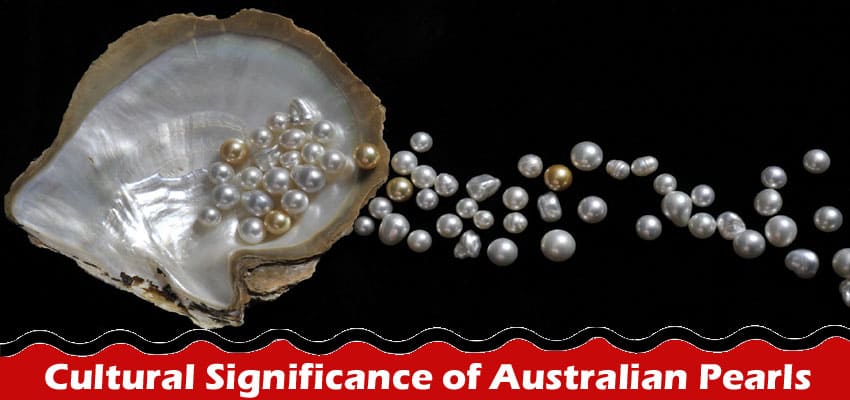Nestled in the heart of the South Pacific, Australia boasts a rich and diverse natural landscape. From the rugged Outback to the pristine coastlines, this vast continent is not only celebrated for its breathtaking scenery but also for its unique cultural treasures.
One such treasure, often overshadowed by Australia’s iconic wildlife and landscapes, is the exquisite Australian pearl. These lustrous gems have a long history and deep cultural significance in Australia, making them a hidden gem in the nation’s heritage. Looking for quality pearls can be daunting, but don’t worry, you might want to browse at https://pearlsofaustralia.com.au/.
Pearls in Aboriginal Culture
The cultural significance of pearls in Australia traces its roots back thousands of years to the indigenous Aboriginal communities. For many Aboriginal groups, pearls were considered sacred and were often used in rituals and ceremonies. The shimmering pearls were believed to have healing properties and were used as adornments for spiritual leaders during important ceremonies.
In addition to their spiritual significance, pearls were practical in traditional Aboriginal life. They were used as valuable trade items, exchanged with neighboring tribes, and prized for their beauty and rarity.
Colonial Influence on Pearl Cultivation
With the arrival of European settlers in the late 18th century, the pearl industry in Australia began to take a new turn. Pearls became highly sought-after commodities in the global market, and pearl diving quickly became a lucrative industry along the coastlines.
Broome, a coastal town in Western Australia, emerged as the epicenter of the Australian pearl industry during the late 19th century. The unique geographical conditions of the region, including the warm waters of the Indian Ocean and the Pinctada maxima oysters that produced large, lustrous pearls, made Broome a hotspot for pearl cultivation.
The Broome Pearling Industry
The Broome pearling industry is integral to understanding the cultural significance of Australian pearls. The town quickly became a melting pot of cultures, with Japanese, Malay, Chinese, and Indigenous Australian divers working alongside European settlers. This multicultural environment shaped the pearling industry and left an indelible mark on the town’s cultural fabric.
The pearl divers, known as “Kanakas,” faced grueling and dangerous working conditions. Diving for pearls was physically demanding and often life-threatening due to the risk of shark attacks and decompression sickness. Despite these hardships, the diverse contributions to the industry were invaluable, and their legacy is an integral part of Broome’s cultural heritage.
Pearl Luggers and the Cultural Heritage
To preserve the rich history of the Broome pearling industry, several pearl luggers – traditional pearling vessels – have been restored and transformed into museums. These floating museums offer visitors a glimpse into the past, showcasing the tools, equipment, and stories of the divers who risked their lives to harvest these precious gems.
One such iconic lugger is the “Pandora,” which played a significant role in the industry’s history. The Pandora Museum in Broome allows visitors to step back in time and appreciate the cultural significance of Australian pearls by immersing themselves in the world of pearl diving.
Modern Pearl Farming in Australia
While the pearling industry has evolved significantly since its early days, it remains vital to Australia’s cultural and economic landscape. Modern pearl farming practices in Australia are characterized by sustainability and ethical harvesting.
One of the most notable developments in Australian pearl farming is the cultivation of South Sea pearls. These pearls, grown in the pristine waters off the coast of Western and Northern Australia, are known for their exceptional size and luster. The commitment to sustainability ensures that pearl farming in Australia remains environmentally responsible, protecting the marine ecosystem for future generations.
The Popularity of Australian Pearls Today
Today, Australian pearls are celebrated not only for their cultural significance but also for their beauty and quality. They have gained recognition worldwide for their unique luster and the diversity of colors they exhibit. Australian pearls are featured in high-end jewelry collections, gracing necklaces, earrings, and rings worn by celebrities and collectors alike.
The appreciation for Australian pearls extends beyond their monetary value. They continue to symbolize Australia’s rich cultural heritage and deep connection to the ocean. Australians take pride in these exquisite gems being grown in their waters, reflected in the support of local pearl farmers and artisans.
Conclusion
The cultural significance of Australian pearls is deeply rooted in the country’s history, from their sacred role in Aboriginal culture to their central role in the multicultural tapestry of Broome. The pearling industry has come a long way, embracing sustainability and ethical practices while producing some of the world’s most sought-after pearls.

